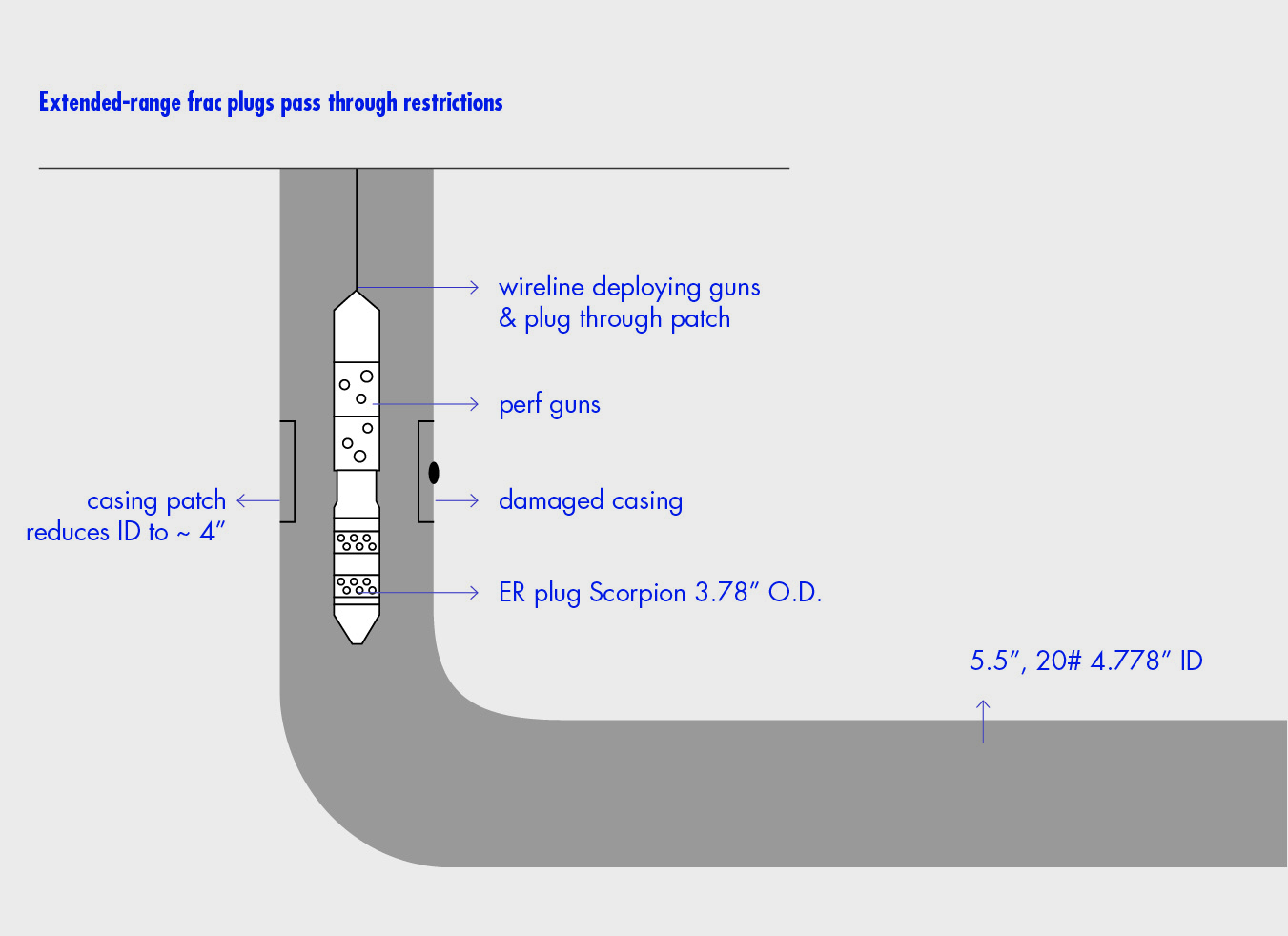Sponsored Post
A range of factors can restrict casing ID and prevent a successful completion. Higher build rates, complex trajectories, and longer horizontal sections pose considerable challenges to casing integrity. Although careful casing and borehole trajectory design and appropriate drilling and completion techniques can reduce the risks, they cannot eliminate them. In addition, the constant pressure to lower well costs has resulted in abandoning practices such as drift runs prior to frac operations.
A solution that has proven effective in overcoming casing integrity issues and keeping operations online has been the deployment of extended-range frac plugs.
“The extended-range frac plugs have a smaller OD, which enables them to pass through the restriction and subsequently expand to the standard casing ID,” said Nick Pottmeyer, Vice President of US Completion Tools at Nine Energy Service. “As a result, they keep operations moving in damaged and repaired wells and eliminate the worst-case scenario of having to abandon the well because of a restricted ID.”
Certain design considerations enhance the applicability of these plugs and should be taken into account for optimal results.
“For example, a molded element system with a smooth surface devoid of rough edges or protrusions lowers the risk of the plug presetting or getting stuck while running into the hole, enabling faster run-in speeds,” said Pottmeyer. “Design features that reduce the risk of element flaring during deployment also expedite run in.”
In addition, the plugs should be designed to be easy to mill out once the fracturing operation is complete because casing ID restrictions necessitate use of a smaller mill. Compact composite plugs with ceramic button slips reduce millout time to just a few minutes per plug. These materials also reduce debris size, so that cuttings are easily circulated out of the well, facilitating cleanup.
The slip design of the extended-range plugs should also be taken into account. The slips must provide secure anchoring in hardened casing (i.e., ICY grades). Once the slips are milled out, the milling assembly pushes the lower end of the frac plug down onto the subsequent plug. Design features that prevent the plug end spinning on top of the next plug are important for efficient millout.
The Scorpion Extended-Range Frac Plugs from Nine Energy Service possess these unique design features that are critical to success and more. Able to withstand expected bottom hole temperatures (300 degrees F) and high-pressure frac operations (10K PSI), the Scorpion Extended-Range Frac Plugs are available in a range of sizes and have the flexibility to deploy on wireline or coiled tubing, which expands the operating envelope.
“In addition to supplying the extended-range plugs, our wireline team also provides modeling software so that the operator can see the details of the wellbore and restriction before plugs are run to help optimize run-in speeds and pump down rates,” said Pottmeyer. “In regions like the Permian, where tortuous wells are common, this modeling can make the difference in achieving a positive outcome.”
To learn more about how Nine Energy Service can help you to overcome casing integrity issues and keep your operations moving, please visit nineenergyservice.com/extended-range.











